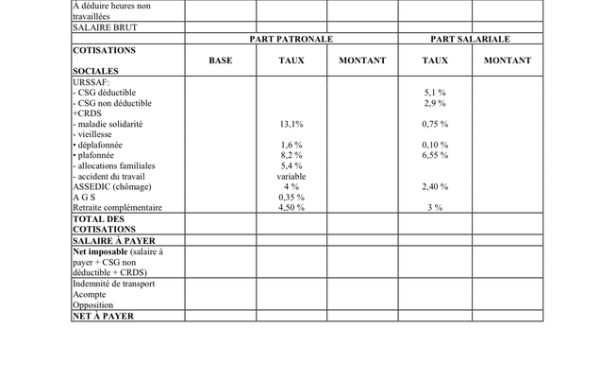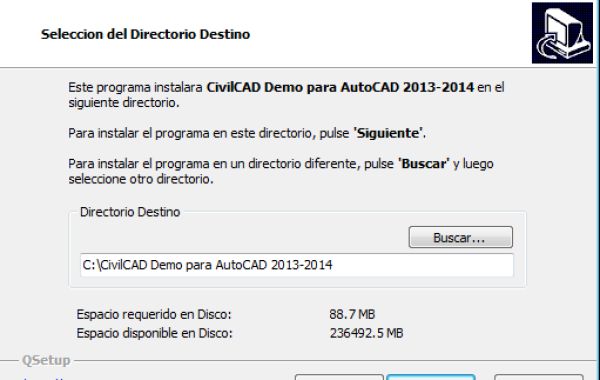Sheet Metal Part Process
In general, the basic equipment of sheet metal process includes Shear Machine, CNC Punching Machine/Laser, Plasma, Water Jet Cutting Machine, Bending Machine, Drilling Machine and various auxiliary equipment such as Uncoiler, Leveling Machine, Deburring Machine, Spot Welder, etc.
Usually, the four most important steps of the sheet metal process are cutting, punching/cutting/, bending/rolling, welding, and surface treatment.
Sheet metal is sometimes also known as wrenching, which is a term derived from the English platemetal. Generally, some thin metal sheets are formed into the desired shape and size through plastic deformation by hand or die stamping, and can be further formed into more complex parts by welding or a small amount of mechanical processing, such as chimneys, tin stoves, and car shells commonly used in households are all sheet metal parts.
Sheet metal processing is called sheet metal processing. The main processes are shearing, bending and snapping, bending and forming, welding, riveting, etc., which require certain geometric knowledge.
Sheet metal parts are thin sheet metal parts, that is, parts that can be processed by means of stamping, bending, stretching, etc. A general definition is -
A general definition is - a part whose thickness does not change during processing. The corresponding parts are casting parts, forging parts, machining parts, etc. For example, the outside iron shell of a car is a sheet metal part, and some cabinets made of stainless steel are also sheet metal parts.
Modern sheet metal process includes: is filament power winding, laser cutting, heavy processing, metal bonding, metal drawing, plasma cutting, precision welding, roll forming, metal sheet bending forming, die forging, water jet cutting, precision welding, etc.
The surface treatment of sheet metal parts is also a very important part of the sheet metal processing process because it has the function of preventing the parts from rusting and beautifying the appearance of the products, etc. The surface treatment of sheet metal parts is mainly to remove oil, oxide, rust, etc. It prepares the surface for post-treatment, which is mainly spraying (baking) paint, spraying plastic and rust-proof layer.
Among the 3D software, SolidWorks, UG, Pro/E, SolidEdge, TopSolid, CATIA, etc. all have a sheet metal part, mainly through the editing of 3D graphics to get the data required for sheet metal processing (such as expansion diagrams, bending lines, etc.) and for CNC Punching Machine/Laser, Plasma, Water Jet Cutting Machine (Laser). Laser, Plasma, Waterjet Cutting Machine, Combination Machine, CNC Bending Machine, etc.
Sheet Metal Part Process Design
After the drawings come to hand, according to the different unfolding diagrams and batches, choose different ways to drop the material, including laser, CNC punching, shearing, mold, etc., and then make the corresponding unfolding according to the drawings. CNC punching machine is affected by tooling, for some shaped workpiece and irregular hole processing, there will be a large burr at the edge, to be post deburring processing, while the accuracy of the workpiece has a certain impact; laser processing without tooling restrictions, flat section, suitable for shaped workpiece processing, but for small workpiece processing time is longer. The table is placed next to the CNC and laser, which is convenient for the plate material to be placed on the machine for processing and reduces the workload of lifting the plate.
Some available edges are placed at the designated place to provide material for test die during bending. After the workpiece is dropped, the edges, burrs, joints should be necessary to trim (grinding treatment), in the tool joints, with a flat file for trimming, for the burr larger workpiece with a grinding machine for trimming, small bore joints with the corresponding small file trimming, to ensure the appearance of beautiful, while the shape of the trimming also for the positioning of bending to ensure that the workpiece bending against the bending machine in the same position, to ensure The same batch of products of the same size.
After the material is dropped, it enters the next process, and different workpieces enter the corresponding process according to the processing requirements. There are bending, riveting, flanging and tapping, spot welding, bumping, segment difference, sometimes after one or two bending to press the nut or stud, which has a mold bumping and segment difference should be considered first processing, so as to avoid other processes first processing will occur after the interference, can not complete the required processing. When there is a snap hook on the upper cover or lower shell, such as bending can not touch welding to be processed before bending.
Bending should first be based on the size of the drawings, material thickness to determine the bending tool and knife slot, to avoid collision between the product and the tool caused by deformation is the key to the selection of the upper die (in the same product, may be used in different models of upper die), the selection of the lower die according to the thickness of the plate to determine. Next is to determine the sequence of bending, bending the general rule is first inside and then outside, first small and then large, first special after ordinary. The workpiece that has to be pressed to death will first be bent to 30°-40°, and then the workpiece will be pressed to death with the leveling die.
When riveting, consider the height of the studs to choose the same different mold, and then adjust the pressure of the press to ensure that the studs and the surface of the workpiece flush to avoid the studs are not pressed firmly or pressed out more than the workpiece surface, resulting in the scrapping of the workpiece.
Welding has argon arc welding, spot welding, carbon dioxide shielded welding, manual arc welding, etc. Spot welding should first consider the location of the workpiece welding, and consider doing positioning tooling to ensure the spot welding position is accurate when mass production.
In order to weld firmly, hit the bump on the workpiece to be welded, which can make the bump evenly contact with the flat plate before the welding is energized to ensure the consistency of the heating of each point, and also to determine the welding position. Similarly, to carry out welding, adjust the pre-pressure time, holding time, maintenance time and rest time to ensure that the workpiece can be spot welded firmly. After spot welding, there will be welding scars on the surface of the workpiece, which should be processed with a flat grinder. Argon arc welding is mainly used when two workpieces are large and are to be connected together, or when the corners of a workpiece are processed to achieve a flat and smooth surface of the workpiece. The heat generated by argon arc welding tends to deform the workpiece, so after welding, it should be processed by grinding machine and flat grinder, especially the corners are more.
Workpiece in the bending, riveting and other processes to be completed after the surface treatment, different plate surface treatment is different, cold plate processing is generally surface plating, after plating is not spraying treatment, the use of phosphate treatment, phosphate treatment to be sprayed after treatment. Electroplated plate type surface cleaning, degreasing, and then spraying. Stainless steel plate (mirror plate, matte plate, brushed plate) is in the bending before the brushing treatment, without spraying, if you need to spraying to hair treatment; aluminum plate is generally oxidation treatment, according to the spraying of different colors to choose a different oxidation base color. Commonly used black and natural color oxidation; aluminum plate to be sprayed chromate oxidation treatment after spraying. Surface pre-treatment can make the clean surface, significantly improve the adhesion of the coating film, can multiply the corrosion resistance of the coating film. The process of cleaning the workpiece first, first hanging the workpiece on the assembly line, first after cleaning solution in (alloy de-greasing powder), then into the clear water, followed by the spraying area, then through the drying area, and finally the workpiece from the assembly line to take off.
After the surface pre-treatment, into the spraying process, in the workpiece requires assembly after spraying, the teeth or part of the conductive holes need to protect the treatment, the teeth hole can be inserted into the soft rubber stick or screwed into the screw, the need for conductive protection to be attached with high-temperature tape, large quantities to do positioning tooling to position protection, so that when spraying will not be sprayed to the workpiece internal, the outer surface of the workpiece can be seen at the nut (flap) hole with screw protection, so as not to spray the workpiece nut (flap) hole at the need to return to the teeth.
Some large quantities of workpieces are also used to protect the tooling; when the workpiece is not assembled for spraying, the area that does not need to be sprayed is blocked with high temperature resistant tape and paper, and some of the exposed nut (stud) holes are protected with screws or high temperature resistant rubber. If the workpiece is sprayed on both sides, the nut (stud) hole is protected by the same method; small workpieces are sprayed after tampering with items such as lead wire or crank pins; some workpieces have high surface requirements and are scraped with ash before spraying; some workpieces are protected with special high temperature resistant stickers at the grounding symbol. When spraying, first of all, the workpiece is hung on the assembly line and the dust stuck on the surface is blown away with the air hose. After spraying, the workpiece enters the spraying area, and after spraying, it enters the drying area along the assembly line, and finally takes off the sprayed workpiece from the assembly line. Among them There are also two types of manual spraying and automatic spraying, so the tooling used is different.
After spraying, we enter the assembly process. Before assembly, we have to tear off the protective stickers used in the original spraying to make sure that the inner threaded holes of the parts are not sprinkled with paint or powder, and we have to wear gloves during the whole process to avoid dust on the workpiece. After the assembly, the workpiece is packed into a special bag for protection after inspection. Some workpieces without special packaging are packed with bubble film, etc. Before packing, the bubble film is cut to the size that can be packed with the workpiece, so as not to affect the processing speed by cutting one side of the package; large quantities can be customized. Special cartons or bubble bags, rubber pads, pallets, wooden boxes, etc. After packing, put it into the carton, and then put the corresponding finished or semi-finished labels on the carton.
The quality of sheet metal parts, in addition to the strict requirements in the production process, is the need for quality inspection independent of the production, one is to strictly control the size according to the drawings, the second is to strictly control the appearance quality, the size does not match the rework or scrap processing, the appearance does not allow touch scratches, after spraying the color difference, corrosion resistance, adhesion, etc. for inspection. This can find the unfolding chart error, bad habits in the process, errors in the process, such as the number of punching programming errors, mold errors, etc.








